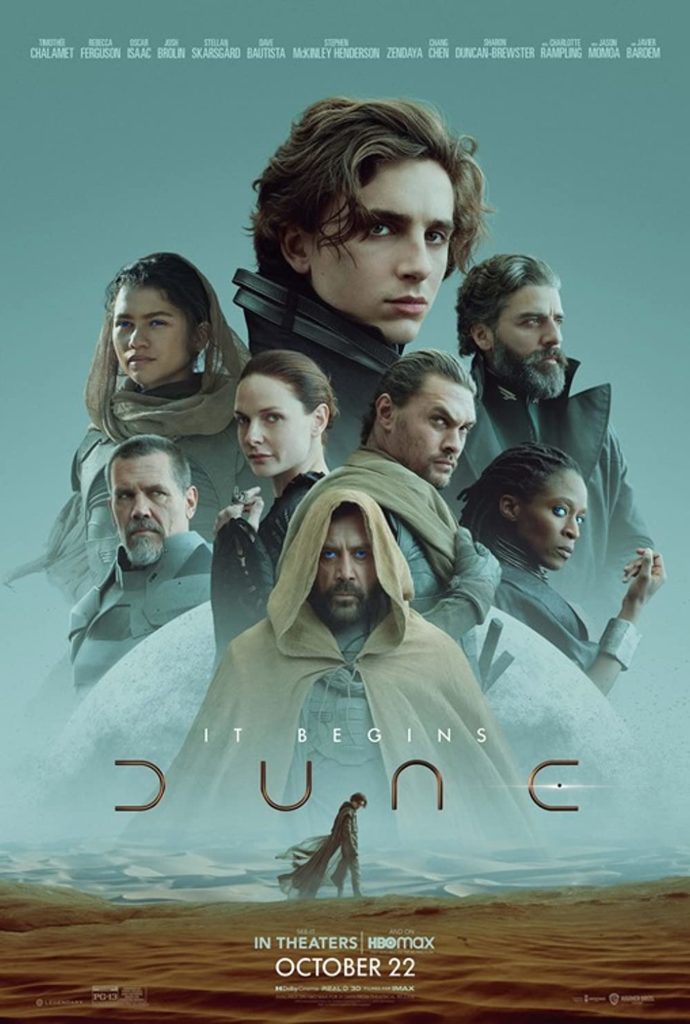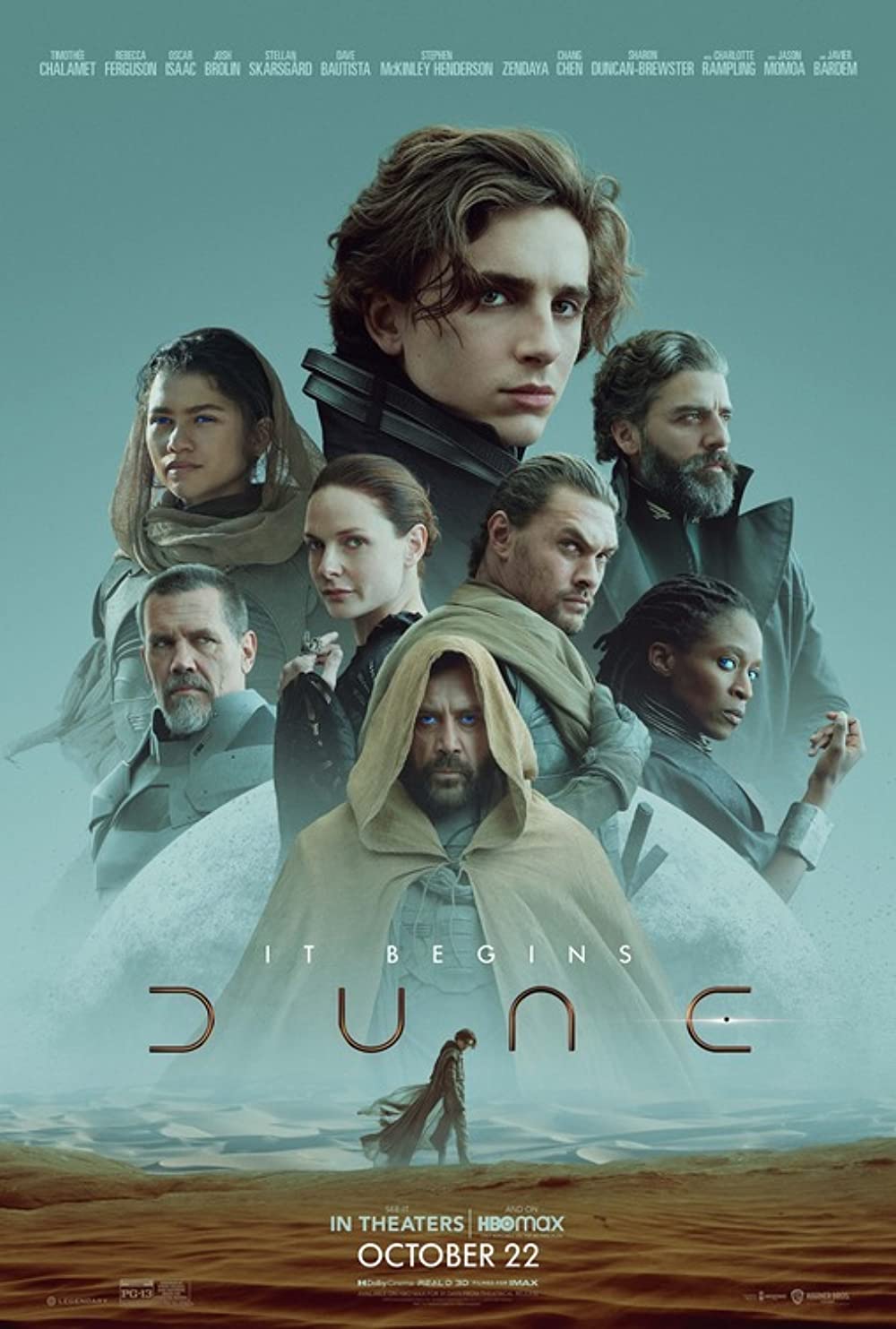By Karissa Schwab | | Creative Director

As we enter the second week following the release of Dune, it remains in the top spot at the box office while receiving rave reviews from audiences and critics alike. The film, based on the 1965 science-fiction novel of the same name by Frank Herbert, follows Paul Atreides (Timothee Chalamet) of the ruling House Atreides. Along with Chalamet, the movie features performances from Zendaya, Rebecca Ferguson, Oscar Isaac, Jason Momoa, Stellan Skarsgard, Dave Bautista, Josh Brolin, and Javier Bardem. With no shortage of highly acclaimed talent, Dune has already raked in $296,401,232, and is sure to continue to dominate the box office in the weeks to come.
As the movie introduces the multi-planetary struggle over the coveted planet of Arrakis, which holds a life-extending substance known as spice within its intolerable deserts, a complicated but intriguing plot begins to unfold. The indigenous people of Arrakis, the Fremen, experience severe oppression as another ruling house mines spice from the surface while ruthlessly governing the planet. When Paul’s father, Leto Atreides (Oscar Isaac), is tasked by the emperor to take over control of Arrakis, a dramatic series of events drives the plot forward as the audience is slowly introduced to Paul’s transcendent destiny.
One of the most notable aspects of the movie is its stunning cinematography and use of visual effects. Watching the film, it felt as if I were in the deserts of Arrakis, during the planet’s golden, crystal-clear daylight hours and its shadowed hours of the night. The filming techniques used work to strengthen the connection the audience makes with the characters, bridging the gap between reality and Dune’s futuristic fiction. Small details also contribute to this effort, such as the inclusion of a royal family portrait in one of the massive rooms belonging to House Atreides, or a ceremonial melody played on the bagpipes announcing the arrival of House Atreides on Arrakis. It is details such as these, along with thorough development of the characters in the film, that ground it in humanity and avoid an overly unrealistic film full of bulky and distracting technology and dramatics.
The one criticism I would offer after watching this film is that it is extremely apparent that the movie sets itself up for a sequel. With the brief amount of time that we see Zendaya in the film, despite her clear importance to the plot, the open-ended nature of the film’s concluding scenes hints at the story’s continuation. Put together with the announcement of Dune Part Two only four days after the movie’s release, one should not expect to receive a satisfyingly complete cinematic experience upon seeing the movie. Rather, viewers will be introduced to the intricacies of a futuristic, diversely structured society brought to life by director Denis Villeneuve. In short, Dune is worth a watch for its stunning cinematography and entertaining performances by a stellar cast (and let’s be real – it’s Timothee Chalamet and Zendaya. Of course you’re going to want to watch).
Sophomore Karissa Schwab is the Creative Director. Her email is kschwab@fandm.edu.
